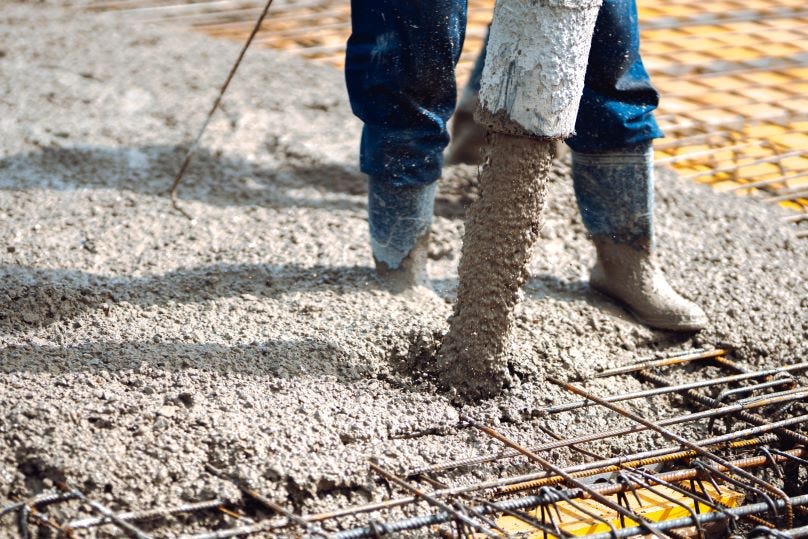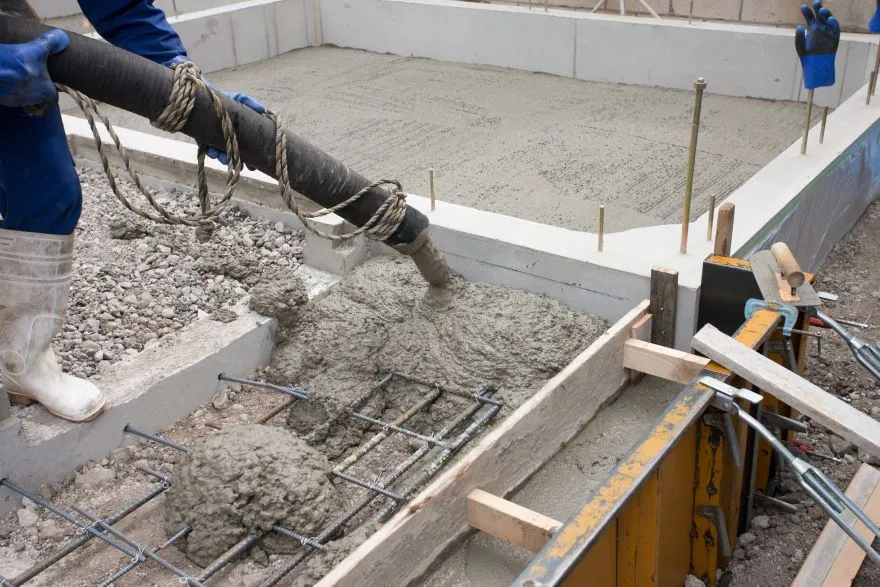How Does Concrete Pumping Work?
Chances are you've witnessed the fascinating process of concrete pumping while passing by a building site. But how exactly does it work?
Let’s take a look at pumped concrete and explore how this efficient and versatile method has revolutionised the construction industry.
The basics of pumping concrete
Concrete pumping is a method that involves transporting liquid concrete from a mixer to a construction site using specialised equipment. This innovative technique has significantly improved the speed and efficiency of concrete placement, while minimising the need for manual labour. With its ability to pour concrete quickly and accurately, it's no wonder this method has become a staple in modern construction projects.
There are two main types of concrete pumps used in the industry: boom pumps and ground pumps. Both of these pumps are designed to transport concrete through a series of pipes and hoses, but they differ in terms of functionality and application.
Reaching new heights with boom pumps
Boom pumps are large, truck-mounted pumps that feature a robotic arm, or ‘boom’, which extends and manoeuvres to deliver the concrete precisely where it's needed.
These pumps are ideal for high-rise construction projects or sites where access is limited. With the ability to reach over obstacles and navigate tight spaces, boom pumps offer unparalleled flexibility in pumping concrete.
The concrete is first mixed and loaded into the truck's hopper, where it is then pumped through a series of pipes attached to the boom. The boom can extend to impressive lengths, often exceeding 60 metres, allowing it to easily reach the upper floors of tall buildings.
Once the boom is in position, the concrete is pumped through a flexible hose at the tip, which can be expertly controlled by the pump operator to deliver the concrete with precision.
Versatile and efficient ground pumps
Ground pumps, also known as line pumps, are smaller and more portable than boom pumps. They are ideal for smaller projects or sites with limited space. While they may not have the reach of a boom pump, ground pumps offer the versatility and efficiency needed for pumping concrete in various applications.
The process for using a ground pump is quite similar to that of a boom pump. The concrete is first mixed and loaded into the hopper of the pump, which is mounted on a trailer or a truck. From there, it is pumped through a series of steel or flexible hoses, which can be extended to reach the desired location. While ground pumps don't have a robotic arm, their hoses can be manually manoeuvred or attached to a temporary framework to direct the concrete flow.




The benefits of concrete pumping
There are a number of advantages to using concrete pumping in construction projects. Here are just a few.
Speed
Pumping concrete is significantly faster than traditional methods, allowing projects to be completed more quickly and efficiently.
Precision
Concrete pumps enable precise control over the placement and flow of concrete, ensuring accurate results and reducing the need for corrections.
Less work
By minimising the need for manual labour, concrete pumping can help reduce costs and improve site safety.
Access
Both boom and ground pumps can navigate difficult-to-reach areas, making them ideal for a wide range of projects.
The future of concrete placement
As you can see, concrete pumping has revolutionised the way the construction industry approaches concrete placement. With the speed, efficiency and versatility offered by both boom and ground pumps, it's no wonder this method has become increasingly popular in recent years.
As technology continues to advance and the construction industry evolves, we can expect to see even more innovative and efficient methods of pumping concrete. In the meantime, both boom and ground pumps will continue to play a crucial role in shaping our cities and infrastructure.
We hope that the next time you pass by a building site, you'll have a better understanding of the fascinating process of concrete pumping.
Frequently Asked Questions
We're here to help
Got questions?
Try our frequently asked questions, how to guides and technical support for specialist advice.
Live chat is here!
Need a quick answer? Why not reach out to our expert teams in your area.
Talk to us
We would love to hear from you! Send us an email for further support, feedback or guidance.


